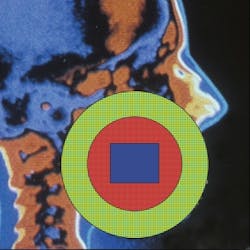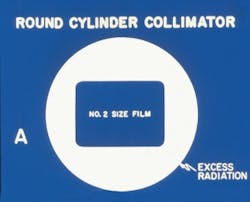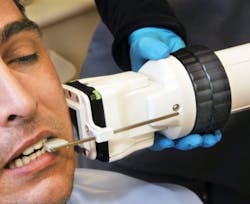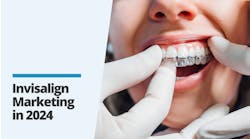by Jeffrey C. Hoos, DMD, FAGD, and Michael V. Razzano, DDS
For more on this topic, go to www.dentaleconomics.com and search using the following key words: ALARA principle, Dr. Jeffrey Hoos, compliant, collimators, Dr. Michael Razzano.
New upgraded guidelines for radiation protection in dentistry were issued in December 2003. Included in the guidelines was a strong reaffirmation for adherence to the ALARA principle (As Low As Reasonably Achievable). The benefits of implementing the ALARA Principle include:- It will bring dentistry and practices into compliance with much of the new guidelines.
- It will provide a safer practice environment.
- It will significantly reduce radiation exposure to staff and patients.
- It will result in more "readable" and diagnostic X-ray images.
Background
The National Council on Radiation Protection and Measurements issued a new set of guidelines in December 2003 on radiation protection in dentistry. The new guidelines supplant the previous guidelines issued in 1970. Craig Palmer, in his descriptive, explanatory ADA News article of Aug. 22, 2005, noted that these new dental radiation guidelines include adhering to the ALARA principle. He concluded that dentists are obligated to follow the ALARA principle. He went on to explain how dentists should implement this principle.
An article in JADA in December 2009 noted recent studies on the development of cancer from long-term, cumulative low doses of ionizing radiation, and also strongly suggested that dentists review their radiographic procedures and make every attempt to lower the radiation exposure to staff and patients.
Implementation recommendations
Dentists have a professional, moral, and legal obligation to keep radiation exposure to patients and staff as low as reasonably achievable - ALARA. Therefore, it is strongly recommended that dentistry conform to the new NCRP radiation guidelines - at a minimum - by following two action steps:
1. Replace all round X-ray collimators (cones) with rectangular collimators. This would reduce the effective dose to the patient by a factor of four to five, without adverse influence on image quality.
2. Use the fastest image receptors available (i.e., use F speed film, which reduces dosage by 20% compared to E speed film, and 50% compared to D speed film. Kodak no longer makes E speed film). Consider direct digital sensors or phosphor plate technology as other ways to reduce dosage.
Discussion
Many dental schools include rectangular collimation in their student teaching and training courses, and have found that these collimators are preferred over round cones. The major issue with rectangular collimators is frequent cone-cutting.
Using a round cone with its larger beam area is an easy, although flawed, way to solve the cone cut problem, even though it exposes patients to more than four times the radiation as compared to rectangular collimation.
There are positioning devices available in the near future that should reduce some of the chances of cone-cutting. A new device manufactured by Interactive Diagnostic Imaging makes the task of taking quality X-rays with a rectangular collimator almost fool-proof.
The system, Tru-Align™ Positioning System, consists of a rectangular collimator that will retrofit over most existing X-ray round cones. Attached to the end of the rectangular cone is a magnetized ring that locks on to the holder when it is aligned properly.
When the beam is perfectly aligned with the acquisition device, the unit beeps and/or a light flashes indicating perfect alignment. This new device can be used with film, digital sensors, or phosphor plates, and works with most standard film/sensor holders.
Conclusion
Adopting all the changes discussed in the new radiation guidelines may seem quite imposing if they are viewed for implementation all at once; however, practically and cost-effectively, it is much easier to tackle the changes one at a time by starting with the easiest and most beneficial ones. An office can quickly and easily switch to high-speed film, from "E" to "F" speed, at no additional cost or procedure disruption.
Upgrading to a rectangular collimator device that incorporates an aiming system similar to that already mentioned is a minor expense investment. These two steps alone will greatly enhance office compliance with the NCRP guidelines.
Changing out our round cones for the rectangular cones is a very effective and simple way to reduce radiation exposure of patients and staff. According to Dr. Robert Langlais, professor/researcher at the University of Texas School of Dentistry, San Antonio, in his article "A Special Report: Rectangular Collimation No Longer a Matter of Choice," rectangular cones "produce more readable X-rays."
The use of digital image acquisition systems, though not a requirement of the new guidelines, is noted to be another way to further reduce patient/staff exposure. Although not required, going digital is a viable way to follow ALARA (p. 88 of NCRP report). Digital systems used with round cones still create a surface skin exposure four to five times greater than rectangular collimators.
Therefore, while digital is beneficial from an immediacy and processing point of view, exposure and image quality can be achieved with F speed film when used with the Tru-Align™ Positioning System.
We think implementation of the ALARA guidelines should happen in all dental offices. As moral professionals, we believe that we owe it to patients and staff to honor this principle. We unquestionably know that radiation reduction is important. Why not take the steps to do something before it is imposed upon you and you are not prepared?
References available upon request.
Dr. Jeffrey Hoos has a private group practice in Stratford. He lectures nationally and internationally on cosmetics, implants, and practice management. His philosophy is best described as "Balancing: the Art, Science, and Business of Dentistry." Contact Dr. Hoos by e-mail at [email protected], or visit his Web site at www.dentalexplorations.com or www.bettersmile.com.
Michael V. Razzano, DDS, is a graduate of the Indiana University School of Dentistry, and practices in Woodstock, Ga. He completed a general practice residency at the Naval Medical Center in San Diego, Calif., and served nine years as a dental officer in the United States Navy.










